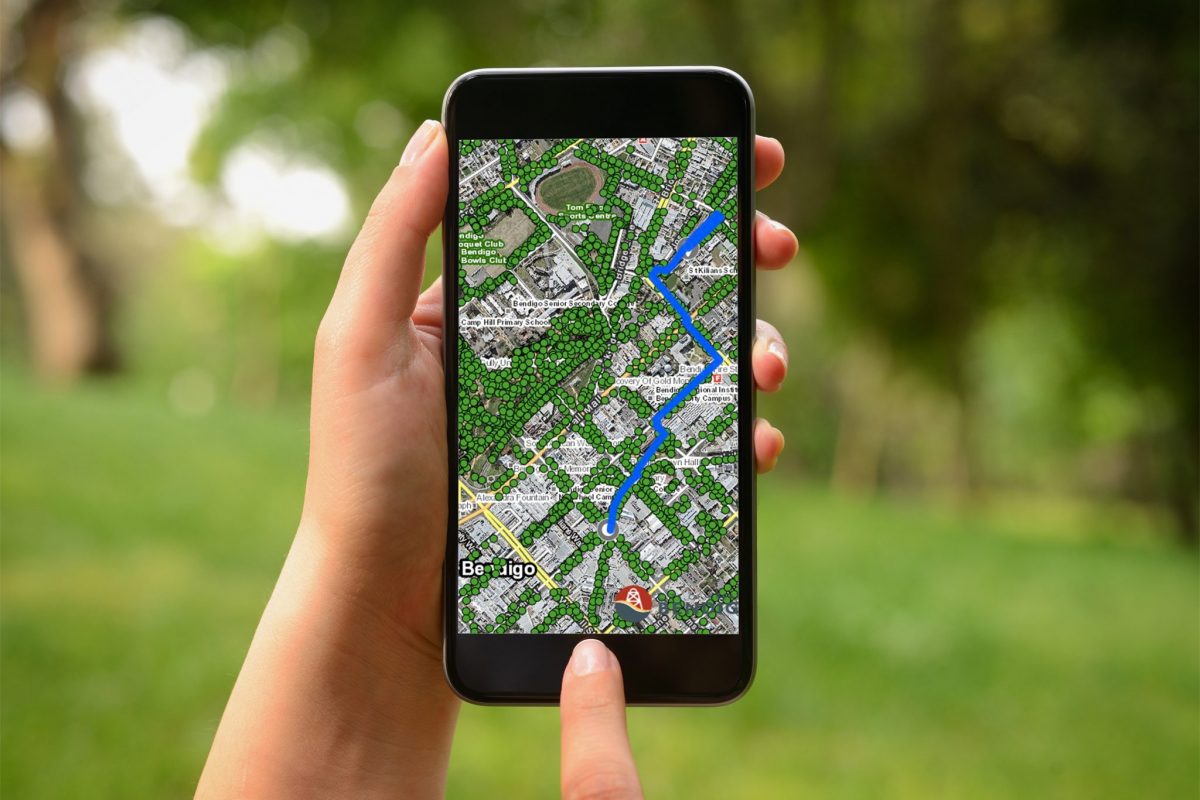Givers of oxygen, providers of shade and shelters to our native wildlife – reasons to love trees never grows old.
Under COVID-19 conditions, National Tree Day on 2 August will look a lot different this year, with tree planting events cancelled.
But it’s still an opportunity to show appreciation for trees and the environment, with Planet Ark encouraging people to pledge support for regeneration.
To celebrate National Tree day, RMIT News has compiled some of the best research and art from RMIT academics and students in appreciation of our deep-rooted love for trees.
Exceptional RMIT fig tree now protected

RMIT’s iconic fig tree has been added to the City of Melbourne’s Exceptional Tree Register, which recognises, celebrates and protects exceptional trees throughout the City of Melbourne.
Sitting in the appropriately named Fig Tree Court, the gigantic, wall-hugging Port Jackson fig tree was one of more than 100 trees to recently be add to the Register this year.
This type of tree is native to New South Wales and unusual to be found growing in Victoria.
Between 70 and 90 years ago, a bird or bat deposited a seed here, which grew into the magnificent tree we see on our City campus.
The nomination was led by Emily Gregg on behalf of the ICON Science Research Group based at the RMIT Centre for Urban Research.
Growing a cool future
The benefits of tree keeping our cities cool has been long establish in urban research. Extreme heat can be a killer with inland regional towns being most vulnerable.
Shadeways, a new digital platform developed by RMIT researchers is helping to inform local governments where to prioritise tree planting to increase shadier paths for pedestrians and cyclists during those hotter months.

Led by Associate Professor Marco Amati from the RMIT Centre for Urban Research and the Sustainable Urban Planning program, the platform will enable residents to move in comfort and safety in their neighbourhoods.
“With the growing number of hot days, Shadeways is responding to the public’s need to travel through cool routes,” Amati said.
Currently the platform has been launched in the City of Bendigo and is being adopted in a pilot for the City of Melbourne’s innovation district as an extension.
Tree heritage trail on campus
More than 90 river red gums are dotted along the Keelbundoora Scar Tree and Heritage Trail on the Bundoora campus.
Six of these are scar trees, where bark would be cut off to make carry-alls, baby beds and canoes – a harvesting technique practised by hundreds of generations of Australia’s Indigenous people.
The trees may be centuries old but the trail, named after a Wurundjeri clan ancestor, was opened in 2008 to preserve the vegetation’s significant cultural and ecological history.
Beauty of trees down to a fine art
Connection to country and our environment is at the heart of RMIT’s ethos.
As part of the University’s refreshed digital brand, RMIT student and Kamilaroi artist Louisa Bloomer created Tree, a colourful piece that tells the story of Australian connection and diversity, along with Bloomer’s own journey of cultural understanding.
Tree is based on Bloomer’s connection to Aboriginal heritage – specifically Kamilaroi and Bundjalong.
At the time of Tree’s release, Bloomer told RMIT News about the links to her ancestry.
“Tree is based on my connection to my Aboriginal heritage and the bloodlines of many in our country,” she said.
“We come from many tribes and mobs and like the gum, there are many colours. There’s even a rainbow gum. But we will always be connected as one to our land.”

Melbourne’s love letters to trees
When School of Design’s Greg More undertook a data visualisation of Melbourne’s 70,000 trees in 2018, he never thought the project would take him to London’s iconic Victoria and Albert museum.
“I knew when I was working on the project it was very unique, but I had no idea it would garner such interest in Melbourne and around the world. It’s great,’’ More said at the time.
The project, Urban Forest Visual, saw each tree given an ID number so Melburnians could email trees to report problems like dangerous branches or vandalism via the interactive map.
Remarkably, people instead sending emails professing their love for trees and sending sentimental notes to them, from brush box trees and Chinese elms.
“Thank you for giving us oxygen. Thank you for being so pretty,’’ started one email to an Algerian Oak. “I’m so sorry you’re going to die soon,’’ started another to an old Golden Elm.
A curated selection of love emails to trees were shown over an animated version of the map as part of the V&A’s Future Starts Here exhibition.
Tree-D modelling to commemorate our dead wood
Edit Html Container Component
A Tree to Remember Campaign by Yazid Ninsalam on Sketchfab
For over 60 years, the Monterey Pine at the front of Walsh Street, has sheltered the iconic residence of the renowned Australian architect Robin Boyd.
But in late 2019, the 20-metre pine reached the end of its life.
To commemorate the monumental tree, Professor Mark Jacques’s Openwork firm and Dr Yazid Ninsalam produced a terrestrial laser scan to document and keep a record of the tree’s form for generations to see.
The scanning technology also identifies which parts of the timber can be used and preserved to continue the story of the tree.
Because it’s a significantly large tree, it is a mammoth task to remove while protecting the heritage listed house and the surrounding areas.Edit Html Container Component
The Robin Boyd Foundation is raising funds to cover the costs of removing the tree and restoring the gardens of the Walsh Street residence. You can find out more about the campaign a Tree to Remember here.
Story: Chanel Koeleman





